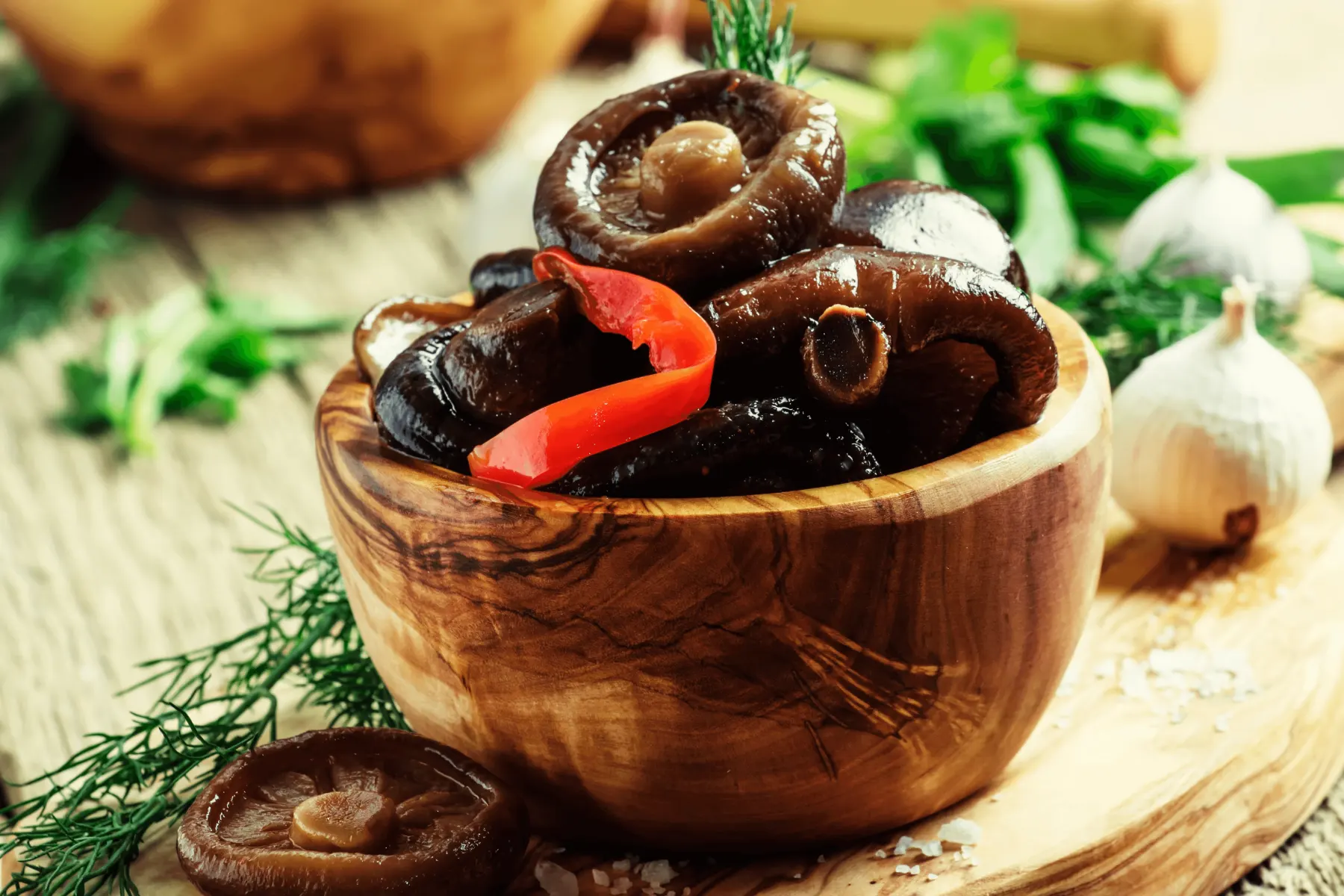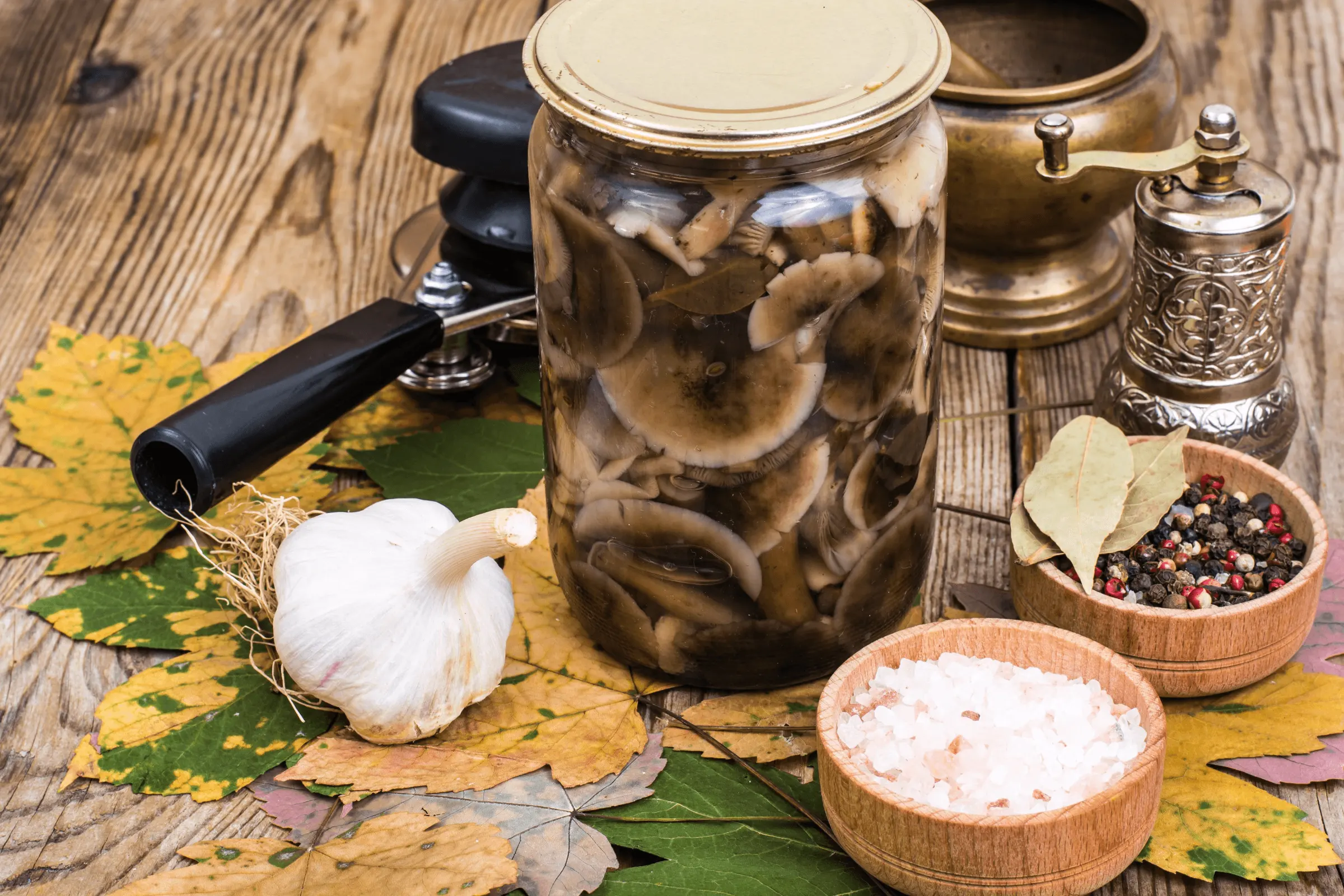call +64 204 098 5657 email:[email protected]
Firstly, it’s very easy to ferment mushrooms. In addition, the process increases many of the inherent nutritional and health benefits of the mushrooms.
If you are new to fermentation, here’s a quick summary of how it works.
Lactobacillus bacteria is considered a beneficial or healthy bacteria which is also an essential part of our bodies. It is also used to make yoghurt and cheese. They are present in our gut, where they also naturally ferment food to release nutrients that our body would otherwise not be able to digest. They also form the basis of healthy gut flora.
Eating fermented food provides 2 healthy outcomes. 1) it is a way for us to populate our bodies with important bacteria (pro-biotic) to maintain a healthy body. 2) It also introduces a food that can not be digested in the upper parts of the digestive tract, so acts as food for the healthy bacteria already living deeper in our gut.
On a side note, one of the outputs of fermentation is gas (generally CO2) so you’ll know how well your body is fermenting things well by the amount of gas you produce.
The following information is fairly technical, as it’s written primarily for people familiar with the fermentation technique. However, for newcomers, it also does a good job of explaining the fundamentals. Don’t be put off that it appears difficult because it isn’t. It is a very simple and natural process. There are several recipes at the bottom of this article that will step you through the process.
Mushroom fermentation has a long history. It is the preferred method of several traditional cultures (eastern Europe and Asia) as a way of preserving and storing mushrooms. More recently, mushroom fermentation has been rigorously tested through lab research to ensure food safety. This testing has mushrooms categorised as very safe for fermentation.
Like all ferments, only the best and freshest mushrooms should be used. Cleaning is an important process especially if mushrooms are foraged. Wash in cold running water and remove any damaged or rotting portions. Take care not to damage the fruit. For mushrooms with thick woody stems, only the caps are used. For mushrooms like Oysters or smaller mushrooms, you can use the whole thing. If the cap is thick, it should be sliced.
The main purpose of blanching is to remove excess air and reduce volume, so more can be packed into the container. Mushrooms have enzymes and other undesirable bacteria that can lead to a fresh mushroom “going off” very quickly. So, unless you have a starter culture to deal with this, it would be best to blanch the mushrooms first.
Note: Care should be taken as blanching will also destroy many of the mushroom’s unique health properties. In lab tests, it was found that the total phenol content decreased by 60% and the antioxidant capacity decreased by 54%.
Salt is used in the fermentation process to draw out liquid from the mushroom (thereby submerging it in water). This saline environment inhibits many other bacteria and organisms that will spoil the ferment but does not affect the LAB.
People experienced in fermentation will often rub the salt in by hand, rather than mixing it with water first. The contact with the hands helps introduce lactobacillus bacteria.
Note: Table salt (with iodine) should be avoided. Salts not containing iodine are often labelled as kosher or pickling salt. Here’s a link to info regarding fermenting and salt
2% salt is recommended
The mushroom’s carbohydrate profile, including complex sugars like polysaccharides, allows it to be fermented without the addition of sugar.
If sugar is used 1% is recommended.
Adding sugar would be recommended if not using a starter culture.
If you follow the guidelines in preparing the ferment, you generally do not need to add additional acids like vinegar. Adding vinegar is often used in pickling mushrooms (a similar food preservation technique) where fermentation is not the goal and you wish to still make it shelf stable. Note achieving an acidic pH level of less than 4.5 (either through fermentation or pickling) is essential in making and keeping the food safe.
If you are unsure about your fermentation skills, adding vinegar will push pH down to a level where you can make the food safe in the initial days. Until the ‘LAB’ population increases sufficiently it can finish the job.
If using vinegar we recommend raw cider vinegar like Bragg Certified Organic Raw Apple Cider Vinegar. A raw vinegar will add bacteria that may increase the acetic acid profile.
Due to the mushroom’s high moisture content and neutral pH, a starter culture or back slopping is recommended. These “back-slops” are best sourced from an earlier and successful ferment. The “juice” from a sauerkraut ferment has been found to work well.
However, mushrooms can be successfully fermented without the need to add a culture. In this case, it may be prudent to add some vinegar to increase acidification in the early stage, and also add some sugar to get the LAB producing sooner.
Note: Lactobacillus Plantarum (a type of LAB culture used for fermentation of plant material) is mainly used for the fermentation of mushrooms. It has also been found that the use of the L. Plantarum 299v probiotic strain enhanced an increase in the antioxidant activity and other phenolic compounds of fermented mushrooms to a level similar to that of fresh mushrooms. We have also successfully used cultures that would be used in yoghurts. If you can source a culture that is specifically formulated for plant-based yoghurts, as the strains will be more suitable for the mushrooms.
Fermentation is usually carried out at a temperature of 18 to 26 °C for a period of several to 30 days. Mushrooms fermented at a lower temperature (around 20 °C) have been reported to have better quality.
If the final product requires longer storage, the safest length of time would be a ferment of +18 days. This ensures that the pH level has decreased (aim for a pH less than 4) to the point that all undesirable bacteria and yeast should have been eliminated. A 30-day ferment should have a pH of around 3.5.
Note: Populations of undesirable bacteria may increase in the first few days of the ferment, so for shorter ferments, it would be appropriate to add some vinegar.
Generally, this will depend on how cool it is kept. It should be good for at least 4 weeks but if stored properly, it should remain stable for up to 6+ months. The cooler the better, as it will slow the fermentation down to a level where the texture and taste of the mushrooms are maintained. Adding a small amount of oil may also help durability for longer storage, but may pose a rancidity problem if it is exposed to air. The high CO2 environment of an unopened jar should stop this.
Pasteurisation is generally not required but it may help to improve the quality of longer stored products. Pasteurisation will not affect the antioxidant capacity and the content of phenolic compounds, however, it will destroy the probiotic capacity by killing the live lactose bacteria.
Bag method: This is done in a food-safe plastic bag. It’s fairly easy to squeeze out all of the air and seal it. Make sure the volume of the bag is at least twice as large as the volume of the ingredients. This allows plenty of head space should the pressure increase and not blow the bag. Once the main fermentation is done, we transfer into jars for storage.
Fermenting is Jars: Jars are great for smaller batches but can be a little tricky in removing and sealing it from the oxygen in the air.
Fermentation Crock: These are great. Chances are, if you have one you know how to use it.
NOTE: the mushrooms do not contain as much water as cabbage and other vegetables, so it is unlikely that the salting will produce enough liquid to submerge the ingredients. This means a little extra caution when using a jar or crock in creating an anaerobic environment.
Our preferred method is to use the bag method. For us this has several benefits, it’s easier to create the anaerobic condition, it allows us to do large batches of about 5kg (10lb) at a time, and perhaps more importantly, you can quickly determine if the fermentation is working by visually seeing the bag swell up with CO2.
Much of the information provided here was sourced from


We are dedicated to producing 100% sustainable, ethical, natural and nutritious foods.
We know that we cannot produce enough volume to feed the planet, so have focused our production on people that appreciate high-quality food that is packed to the gunnel with health and flavour.